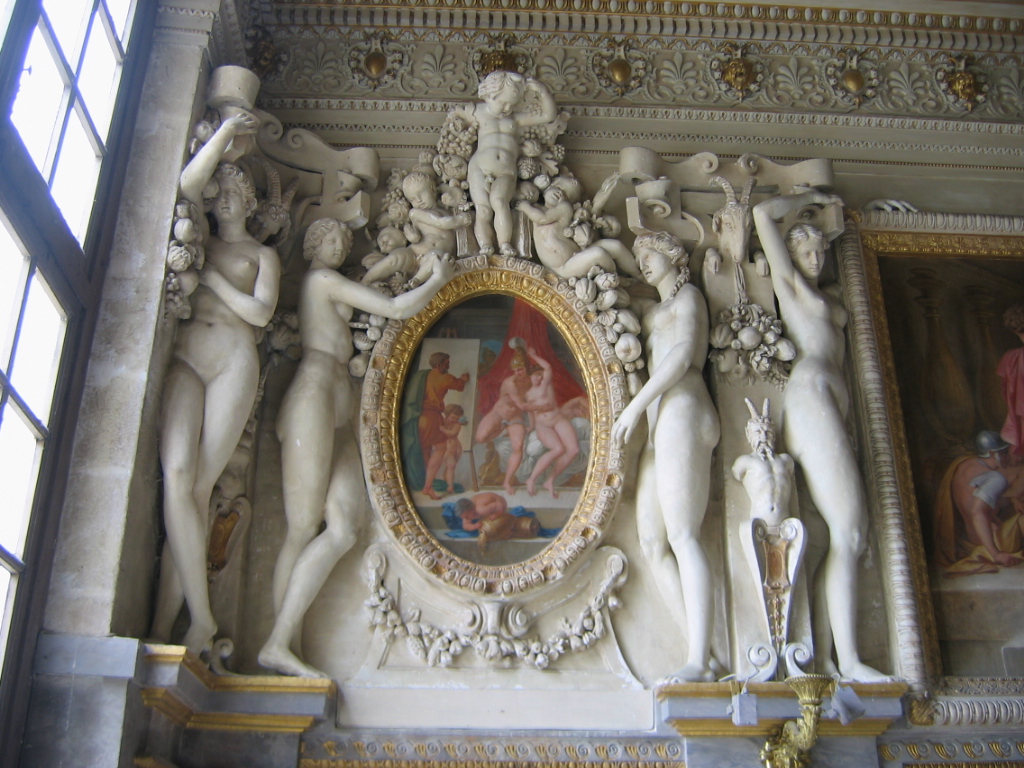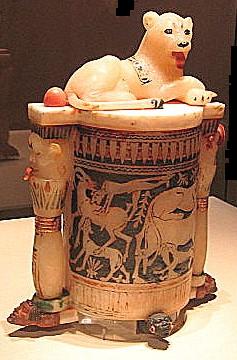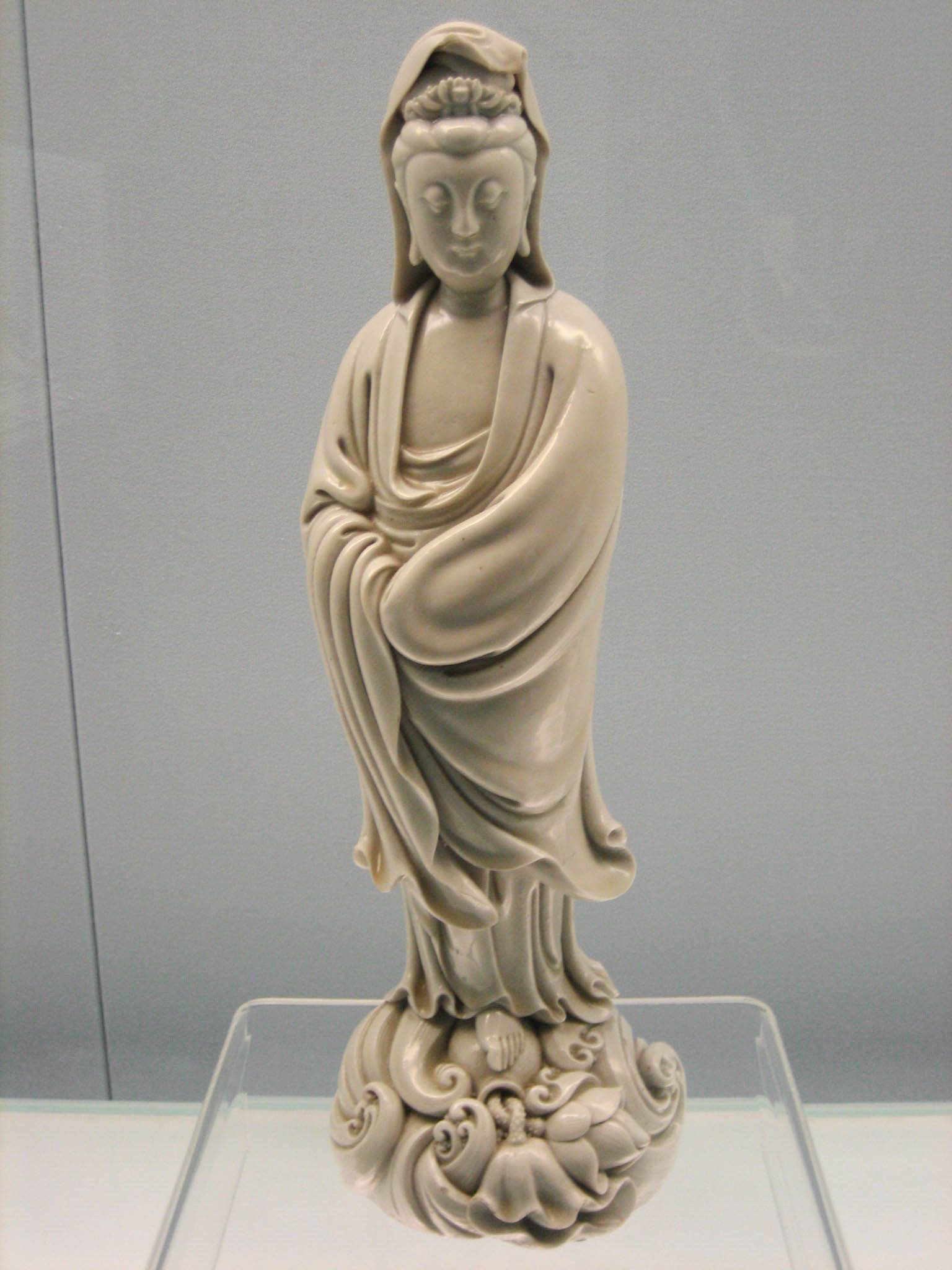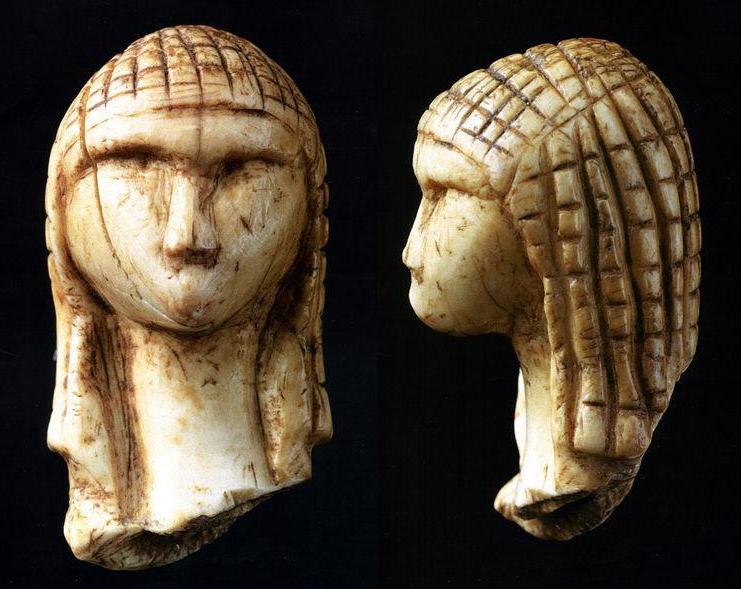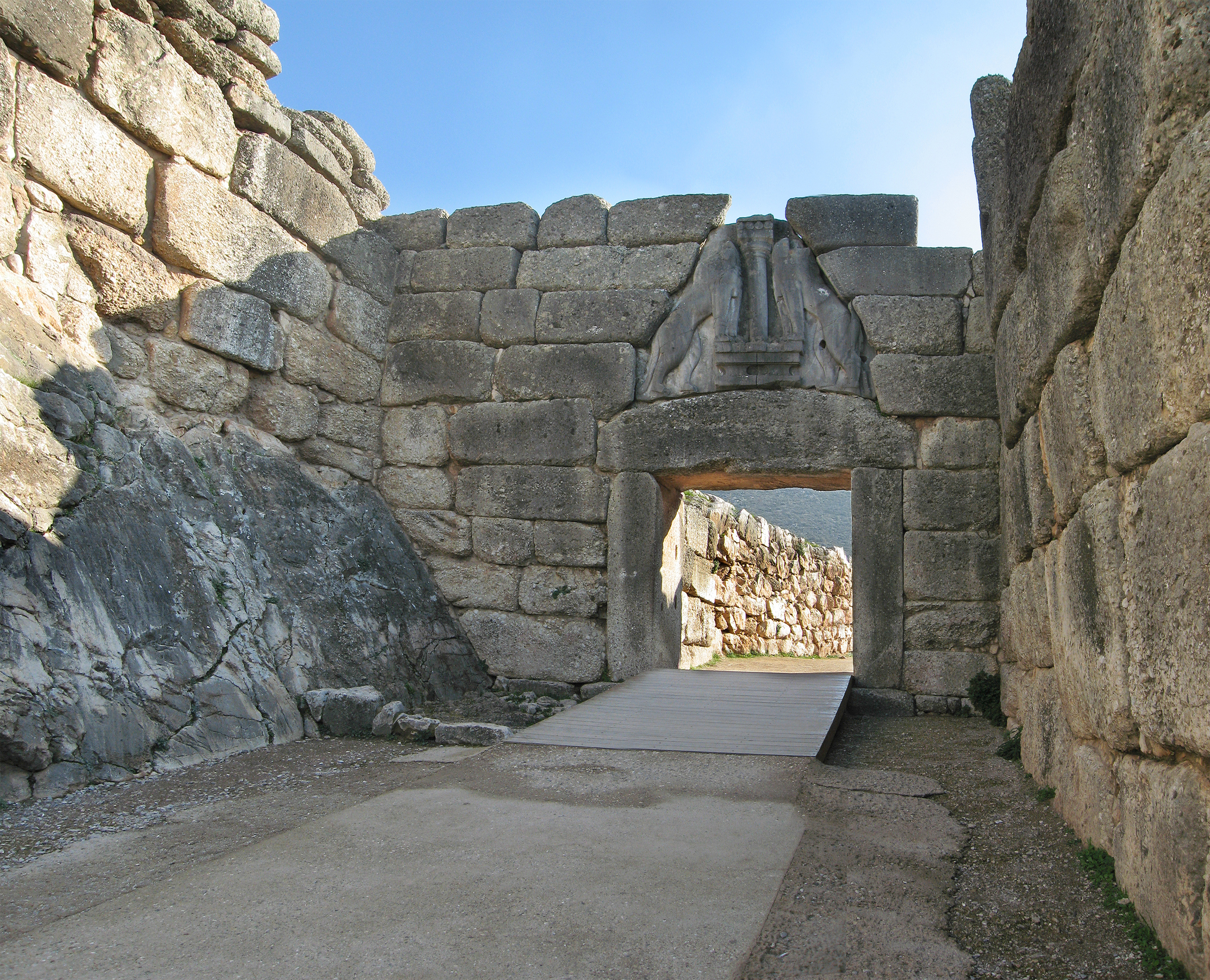|
Royal Palace Of Ugarit
The Royal Palace of Ugarit is a Bronze Age ruins in the former port city of Ugarit on the Mediterranean coast of Syria. The royal residence of the rulers of the ancient Kingdom of Ugarit, it was excavated with the rest of the city from the 1930s by French archaeologist Claude F. A. Schaeffer, and is considered one of the most important finds made there. Overview Layout The palace is located in the north-west corner of the former city, and originally spanned an area of . Its surrounds were enclosed by a fortified wall that dates back to the 15th-century BC. There were three entrances: the main gate on the northwest, protected by an array of towers with thick walls and dubbed today "the Fortress",Gates, 2003, p. 160. and smaller accesses in the northeast and the southwest. The compound consisted of ninety rooms divided between two floors. The rooms were built around four large and four smaller courtyards. Its western end had a large garden, and three underground burial chamber ... [...More Info...] [...Related Items...] OR: [Wikipedia] [Google] [Baidu] |
Postern
A postern is a secondary door or gate in a fortification such as a city wall or castle curtain wall. Posterns were often placed in concealed locations, allowing inconspicuous entrance and exit. In the event of a siege, a postern could act as a sally port, allowing defenders to make a sortie on the besiegers. Placed in a less exposed, less visible location, they were usually relatively small, and therefore easily defensible.Van Emden, Wolgang. "Castle in Medieval French Literature", ''The Medieval Castle: Romance and Reality'' (Kathryn L. Reyerson, Faye Powe, eds.) U of Minnesota Press, 1991, p.17 Tactical use Posterns were one of the essen ...[...More Info...] [...Related Items...] OR: [Wikipedia] [Google] [Baidu] |
Plaster
Plaster is a building material used for the protective or decorative coating of walls and ceilings and for moulding and casting decorative elements. In English, "plaster" usually means a material used for the interiors of buildings, while "render" commonly refers to external applications. The term stucco refers to plasterwork that is worked in some way to produce relief decoration, rather than flat surfaces. The most common types of plaster mainly contain either gypsum, lime, or cement,Franz Wirsching "Calcium Sulfate" in Ullmann's Encyclopedia of Industrial Chemistry, 2012 Wiley-VCH, Weinheim. but all work in a similar way. The plaster is manufactured as a dry powder and is mixed with water to form a stiff but workable paste immediately before it is applied to the surface. The reaction with water liberates heat through crystallization and the hydrated plaster then hardens. Plaster can be relatively easily worked with metal tools and sandpaper and can be moulded, either on ... [...More Info...] [...Related Items...] OR: [Wikipedia] [Google] [Baidu] |
Ramesses II
Ramesses II (sometimes written Ramses or Rameses) (; , , ; ), commonly known as Ramesses the Great, was an Pharaoh, Egyptian pharaoh. He was the third ruler of the Nineteenth Dynasty of Egypt, Nineteenth Dynasty. Along with Thutmose III of the Eighteenth Dynasty of Egypt, Eighteenth Dynasty, he is often regarded as the greatest, most celebrated, and most powerful pharaoh of the New Kingdom of Egypt, New Kingdom, which itself was the most powerful period of ancient Egypt. He is also widely considered one of ancient Egypt's most successful warrior pharaohs, conducting no fewer than 15 military campaigns, all resulting in victories, excluding the Battle of Kadesh, generally considered a stalemate. In Ancient Greek literature, ancient Greek sources, he is called Ozymandias, derived from the first part of his Egyptian-language regnal name: . Ramesses was also referred to as the "Great Ancestor" by successor pharaohs and the Egyptian people. For the early part of his reign, he focu ... [...More Info...] [...Related Items...] OR: [Wikipedia] [Google] [Baidu] |
Cartouche
upalt=A stone face carved with coloured hieroglyphics. Two cartouches - ovoid shapes with hieroglyphics inside - are visible at the bottom., Birth and throne cartouches of Pharaoh KV17.html" ;"title="Seti I, from KV17">Seti I, from KV17 at the Valley of the Kings, Egypt. Neues Museum, Berlin In Egyptian hieroglyphs, a cartouche ( ) is an oval with a line at one end tangent to it, indicating that the text enclosed is a pharaoh, royal name. The first examples of the cartouche are associated with pharaohs at the end of the Third Dynasty, but the feature did not come into common use until the beginning of the Fourth Dynasty under Pharaoh Sneferu. While the cartouche is usually vertical with a horizontal line, if it makes the name fit better it can be horizontal, with a vertical line at the end (in the direction of reading). The ancient Egyptian word for cartouche was (compare with Coptic ''šne'' yielding eventual sound changes), and the cartouche was essentially an expanded s ... [...More Info...] [...Related Items...] OR: [Wikipedia] [Google] [Baidu] |
Alabaster
Alabaster is a mineral and a soft Rock (geology), rock used for carvings and as a source of plaster powder. Archaeologists, geologists, and the stone industry have different definitions for the word ''alabaster''. In archaeology, the term ''alabaster'' includes objects and artefacts made from two different minerals: (i) the fine-grained, massive type of gypsum, and (ii) the fine-grained, banded type of calcite.''More About Alabaster and Travertine'': Brief Guide explains the different definitions used by geologists, archaeologists, and the stone trade. Oxford University Museum of Natural History, 2012/ref> Chemically, gypsum is a Water of crystallization, hydrous sulfate of calcium, whereas calcite is a carbonate of calcium. As types of alabaster, gypsum and calcite have similar properties, such as light color, translucence, and soft stones that can be sculpture, carved and sculpted; thus the historical use and application of alabaster for the production of carved, decorative art ... [...More Info...] [...Related Items...] OR: [Wikipedia] [Google] [Baidu] |
Ancient Egypt
Ancient Egypt () was a cradle of civilization concentrated along the lower reaches of the Nile River in Northeast Africa. It emerged from prehistoric Egypt around 3150BC (according to conventional Egyptian chronology), when Upper and Lower Egypt were amalgamated by Menes, who is believed by the majority of List of Egyptologists, Egyptologists to have been the same person as Narmer. The history of ancient Egypt unfolded as a series of stable kingdoms interspersed by the "Periodization of ancient Egypt, Intermediate Periods" of relative instability. These stable kingdoms existed in one of three periods: the Old Kingdom of Egypt, Old Kingdom of the Early Bronze Age; the Middle Kingdom of Egypt, Middle Kingdom of the Middle Bronze Age; or the New Kingdom of Egypt, New Kingdom of the Late Bronze Age. The pinnacle of ancient Egyptian power was achieved during the New Kingdom, which extended its rule to much of Nubia and a considerable portion of the Levant. After this period, Egypt ... [...More Info...] [...Related Items...] OR: [Wikipedia] [Google] [Baidu] |
Figurine
A figurine (a diminutive form of the word ''figure'') or statuette is a small, three-dimensional sculpture that represents a human, deity or animal, or, in practice, a pair or small group of them. Figurines have been made in many media, with clay, metal, wood, glass, and today plastic or resin the most significant. Ceramic figurines not made of porcelain are called terracottas in historical contexts. Figures with movable parts, allowing limbs to be posed, are more likely to be called dolls, mannequins, or action figures; or robots or automata, if they can move on their own. Figurines and miniatures are sometimes used in board games, such as chess, and tabletop role playing games. The main difference between a figurine and a statue is size. There is no agreed limit, but typically objects are called "figurines" up to a height of perhaps , though most types are less than high. Prehistory In China, there are extant Neolithic figurines. European prehistoric figurines of wo ... [...More Info...] [...Related Items...] OR: [Wikipedia] [Google] [Baidu] |
Stele
A stele ( ) or stela ( )The plural in English is sometimes stelai ( ) based on direct transliteration of the Greek, sometimes stelae or stelæ ( ) based on the inflection of Greek nouns in Latin, and sometimes anglicized to steles ( ) or stelas ( ). is a stone or wooden slab, generally taller than it is wide, erected in the ancient world as a monument. The surface of the stele often has text, ornamentation, or both. These may be inscribed, carved in relief, or painted. Stelae were created for many reasons. Grave stelae were used for funerary or commemorative purposes. Stelae as slabs of stone would also be used as ancient Greek and Roman government notices or as boundary markers to mark borders or property lines. Stelae were occasionally erected as memorials to battles. For example, along with other memorials, there are more than half-a-dozen steles erected on the battlefield of Waterloo at the locations of notable actions by participants in battle. A traditional Wester ... [...More Info...] [...Related Items...] OR: [Wikipedia] [Google] [Baidu] |
Ivory Carving
Ivory carving is the carving of ivory, that is to say animal tooth or tusk, generally by using sharp cutting tools, either mechanically or manually. Objects carved in ivory are often called "ivories". Humans have ornamentally carved ivory since prehistoric times, though until the 19th-century opening-up of the interior of Africa, it was usually a rare and expensive material used for small luxury products. Very fine detail can be achieved, and as the material, unlike precious metals, has no bullion value and usually cannot easily be recycled, the survival rate for ivory pieces is much higher than for those in other materials. Ivory carving has a special importance to the medieval art of Europe because of this, and in particular for Byzantine art as so little monumental sculpture was produced or has survived. As the elephant and other ivory-producing species have become endangered, largely because of hunting for ivory, CITES and national legislation in most countries have redu ... [...More Info...] [...Related Items...] OR: [Wikipedia] [Google] [Baidu] |
World War II
World War II or the Second World War (1 September 1939 – 2 September 1945) was a World war, global conflict between two coalitions: the Allies of World War II, Allies and the Axis powers. World War II by country, Nearly all of the world's countries participated, with many nations mobilising all resources in pursuit of total war. Tanks in World War II, Tanks and Air warfare of World War II, aircraft played major roles, enabling the strategic bombing of cities and delivery of the Atomic bombings of Hiroshima and Nagasaki, first and only nuclear weapons ever used in war. World War II is the List of wars by death toll, deadliest conflict in history, causing World War II casualties, the death of 70 to 85 million people, more than half of whom were civilians. Millions died in genocides, including the Holocaust, and by massacres, starvation, and disease. After the Allied victory, Allied-occupied Germany, Germany, Allied-occupied Austria, Austria, Occupation of Japan, Japan, a ... [...More Info...] [...Related Items...] OR: [Wikipedia] [Google] [Baidu] |
Mycenaean Greece
Mycenaean Greece (or the Mycenaean civilization) was the last phase of the Bronze Age in ancient Greece, spanning the period from approximately 1750 to 1050 BC.. It represents the first advanced and distinctively Greek civilization in mainland Greece with its palatial states, urban organization, works of art, and writing system.. The Mycenaeans were mainland Greek peoples who were likely stimulated by their contact with insular Minoan Crete and other Mediterranean cultures to develop a more sophisticated sociopolitical culture of their own. The most prominent site was Mycenae, after which the culture of this era is named. Other centers of power that emerged included Pylos, Tiryns, and Midea in the Peloponnese, Orchomenos, Thebes, and Athens in Central Greece, and Iolcos in Thessaly. Mycenaean settlements also appeared in Epirus, Macedonia, on islands in the Aegean Sea, on the south-west coast of Asia Minor, and on Cyprus, while Mycenaean-influenced settlements appear ... [...More Info...] [...Related Items...] OR: [Wikipedia] [Google] [Baidu] |
Hittites
The Hittites () were an Anatolian peoples, Anatolian Proto-Indo-Europeans, Indo-European people who formed one of the first major civilizations of the Bronze Age in West Asia. Possibly originating from beyond the Black Sea, they settled in modern-day Turkey in the early 2nd millennium BC. The Hittites formed a series of Polity, polities in north-central Anatolia, including the kingdom of Kussara (before 1750 BC), the Kültepe, Kanesh or Nesha Kingdom (–1650 BC), and an empire centered on their capital, Hattusa (around 1650 BC). Known in modern times as the Hittite Empire, it reached its peak during the mid-14th century BC under Šuppiluliuma I, when it encompassed most of Anatolia and parts of the northern Levant and Upper Mesopotamia, bordering the rival empires of the Hurri-Mitanni and Assyrians. Between the 15th and 13th centuries BC, the Hittites were one of the dominant powers of the Near East, coming into conflict with the New Kingdom of Egypt, the Middle Assyrian Empi ... [...More Info...] [...Related Items...] OR: [Wikipedia] [Google] [Baidu] |
